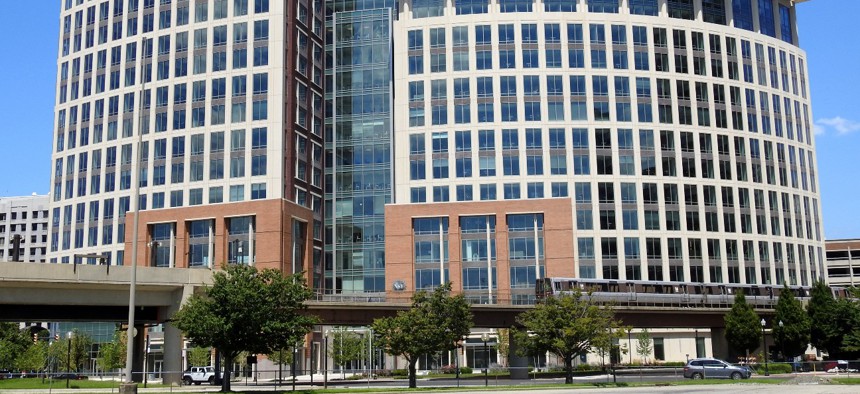Science Foundation and Union Clear the Air on Reentry, Remote Work Plans
In a message to employees, agency leaders provided a detailed timeline for returning to the office and implementing plans to adopt a hybrid work environment, and sought to assuage employee fears amid the rise of a new COVID variant.
The leadership of the National Science Foundation and the union that represents agency employees last week sought to ease concerns about the agency’s approach to reentry amid the rise of the Omicron variant of COVID-19, as well as worries about the pace of implementing plans for a hybrid work environment when the pandemic has subsided.
Earlier this month, NSF Director Sethuraman Panchanathan came under criticism for the manner in which he announced the agency’s plan for employees to return to the office. That announcement did not mention the new variant, and left the impression among some that the agency was running behind on the schedule proposed by a Tiger team report for shifting to a hybrid work environment, in which employees would have the option to telework more regularly or work remotely.
But on Dec. 17, Panchanathan and David Verardo, president of the American Federation of Government Employees Local 3403, which represents NSF workers, issued a joint statement to employees seeking to provide more detail both on how the agency is handling reentry, as well as the timeframe for implementing workplace flexibilities on a more permanent basis.
“We respect the many concerns and emotions surrounding the return to the NSF site and want to take this opportunity to address some of the sources of those concerns,” they wrote. “In particular, we want to share with you a detailed update and timeline for return to site and remote/telework activities at NSF to help us all start planning ahead for the coming months.”
Starting next month, the agency’s executive leadership team will return to NSF headquarters “a few days per week,” and begin an agency-wide assessment of what positions will be eligible for remote and increased telework. During this time, the remainder of the NSF workforce will remain on maximum telework.
In February, division directors and deputy directors will begin returning to the office, and the agency will notify other staff of when they will return to the office with at least 30 days notice. Employees then will be able to work with their managers to remain on fulltime telework in 90 day increments.
In March, the remainder of staff will begin to return to NSF headquarters, except those who have been approved to continue fulltime telework, and agency leadership expects to complete their assessment of which jobs will be eligible for increased telework and remote work.
Panchanathan and Verardo said that the timeline remains subject to change, due to the need to monitor the rate of COVID-19 transmission with the rise of the Omicron variant.
“Throughout the process, we will evaluate and evolve our approach and plans based on what we learn as an organization and external factors we need to consider,” they wrote. “Please rest assured that we are watching the Omicron variant situation closely and will be ready to shift the plan as necessary . . . Many of you have been asking why action is needed now. Quite simply, we are working within the framework that the Biden-Harris administration has laid out regarding its clear expectation that agencies work towards a hybrid work model. Therefore, we need to be prepared for our posture once we are on the other side of the pandemic.”
NSF declined to comment beyond Panchanathan and Verardo’s message for this story.








